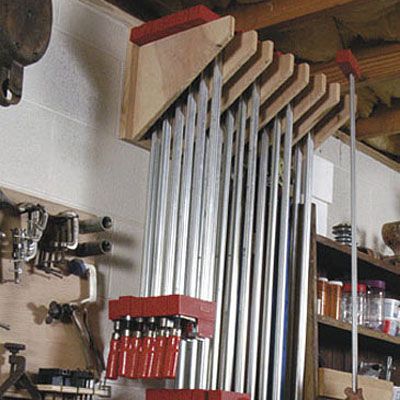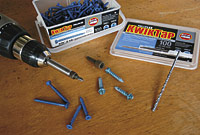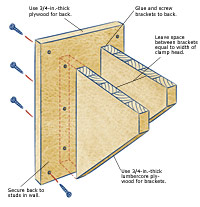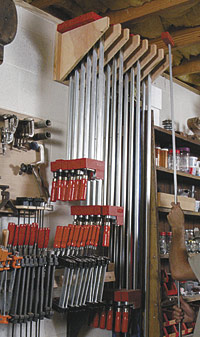Gripping Walls with Confidence
With a solid connection and a clever shopmade bracket design, you can organize and hang your clamps and jigs securely out of the way
Hanging tools and jigs on walls is a sensible way to make use of available shop space. But the sheer weight of tools calls for a solid connection to the wall. If the wall is a conventional wood-framed structure, be sure to drive screws through the wall surface and into the studs behind. Avoid drywall fasteners, such as molly bolts, because they don’t have the necessary shear strength for holding the weight of most shop gear.
When attaching to cinder-block or masonry walls, there are many systems and fasteners to choose from. One of the easiest and strongest types is a self-tapping screw sold under various trade names. The beauty of this system is that there’s no mounting and remounting of the work on the wall to locate and install the fasteners, as most other systems require. With self-tapping screws, it’s an easy, one-shot affair. The screws come in a box in convenient Phillips-style or hex head, with the appropriate-sized carbide-tipped masonry bit. Drill pilot holes through the work you want to attach, hold the work in position on the wall, and drill through the holes and into the masonry with the bit. Then, without moving the work, drive the screws with a Phillips- or hex-head driver bit into the work and the wall for a simplified and worry-free connection.
Andy Rae lives in North Carolina, where he makes custom furniture and teaches and writes about woodworking.
Photos: Andy Rae © 2006 by The Taunton Press, Inc.; drawing: © 2006 by The Taunton Press, Inc.
From Workshop Idea Book, pp. 140-141
Fine Woodworking Recommended Products

Blackwing Pencils

Woodriver Rechargeable Desiccant Bag

Bessey EKH Trigger Clamps


























Log in or create an account to post a comment.
Sign up Log in